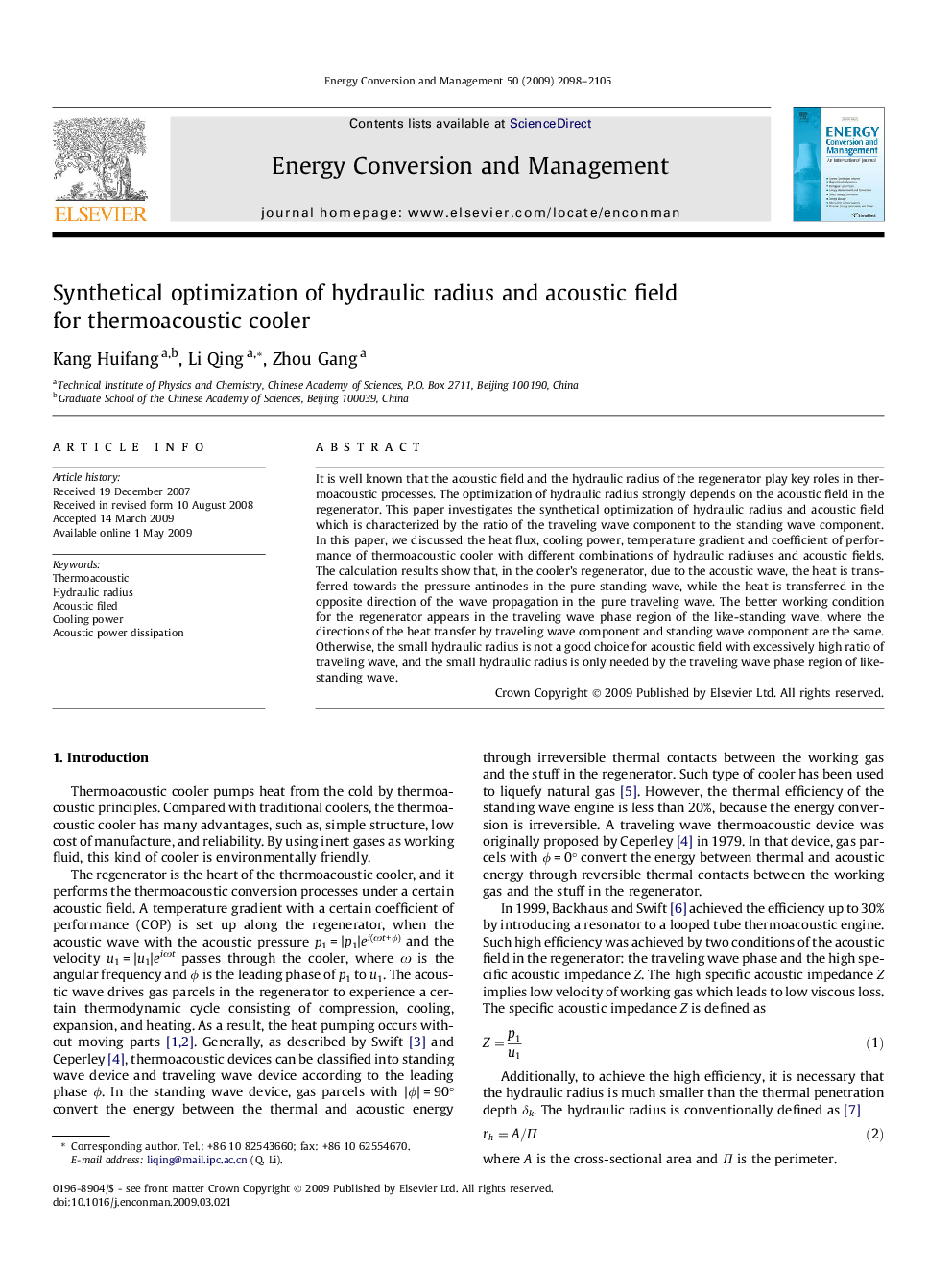| Article ID | Journal | Published Year | Pages | File Type |
|---|---|---|---|---|
| 772697 | Energy Conversion and Management | 2009 | 8 Pages |
It is well known that the acoustic field and the hydraulic radius of the regenerator play key roles in thermoacoustic processes. The optimization of hydraulic radius strongly depends on the acoustic field in the regenerator. This paper investigates the synthetical optimization of hydraulic radius and acoustic field which is characterized by the ratio of the traveling wave component to the standing wave component. In this paper, we discussed the heat flux, cooling power, temperature gradient and coefficient of performance of thermoacoustic cooler with different combinations of hydraulic radiuses and acoustic fields. The calculation results show that, in the cooler’s regenerator, due to the acoustic wave, the heat is transferred towards the pressure antinodes in the pure standing wave, while the heat is transferred in the opposite direction of the wave propagation in the pure traveling wave. The better working condition for the regenerator appears in the traveling wave phase region of the like-standing wave, where the directions of the heat transfer by traveling wave component and standing wave component are the same. Otherwise, the small hydraulic radius is not a good choice for acoustic field with excessively high ratio of traveling wave, and the small hydraulic radius is only needed by the traveling wave phase region of like-standing wave.
